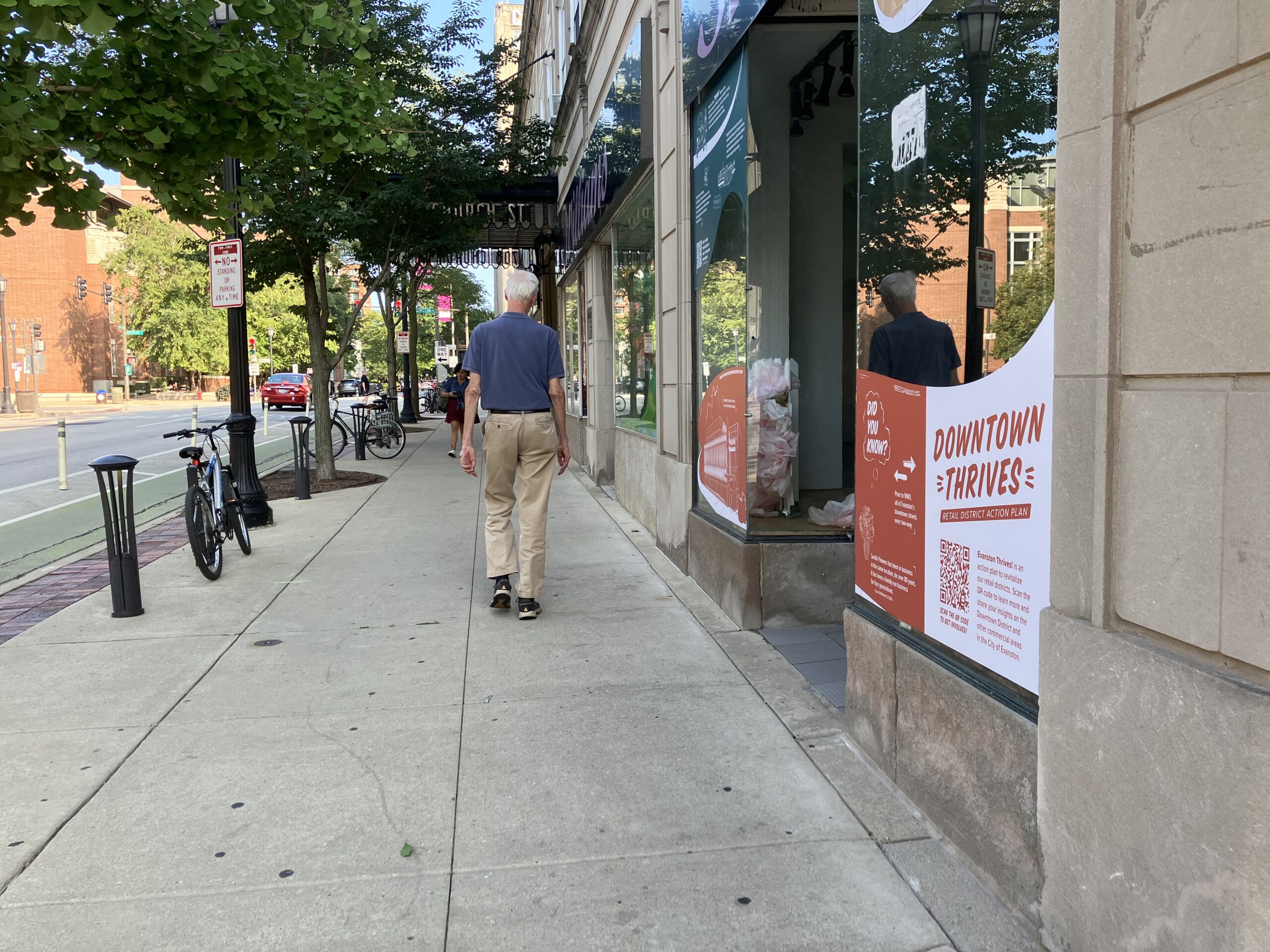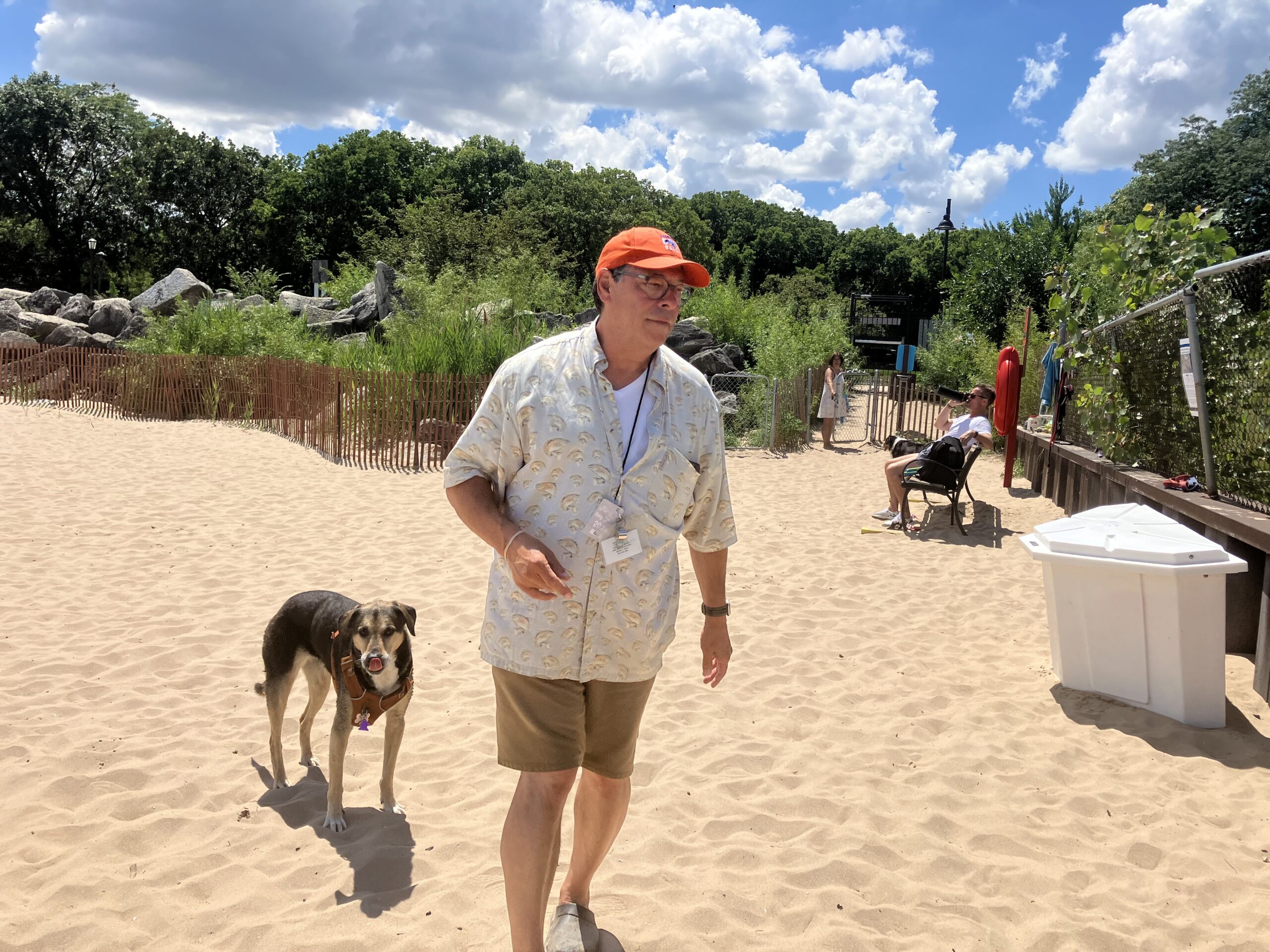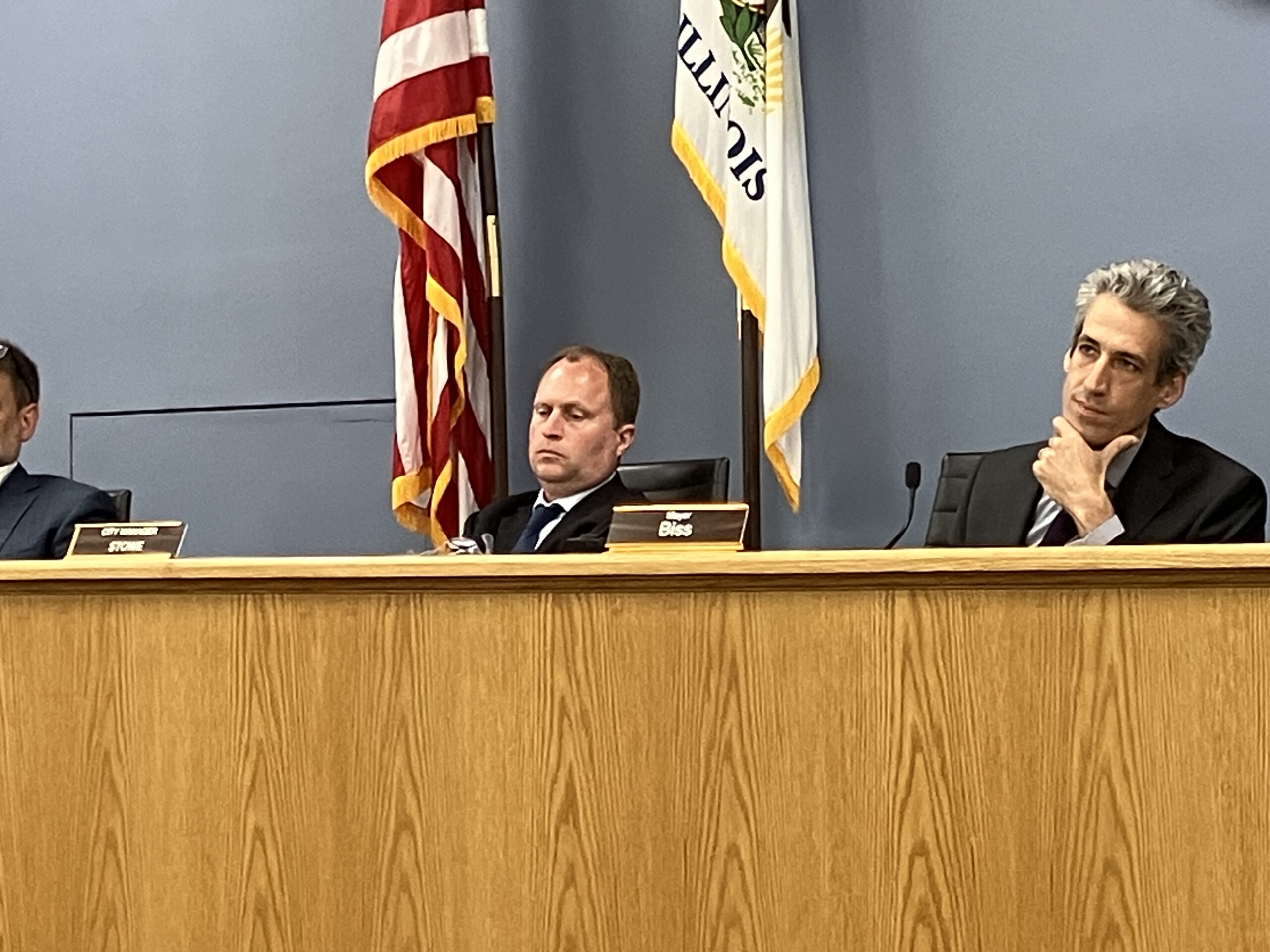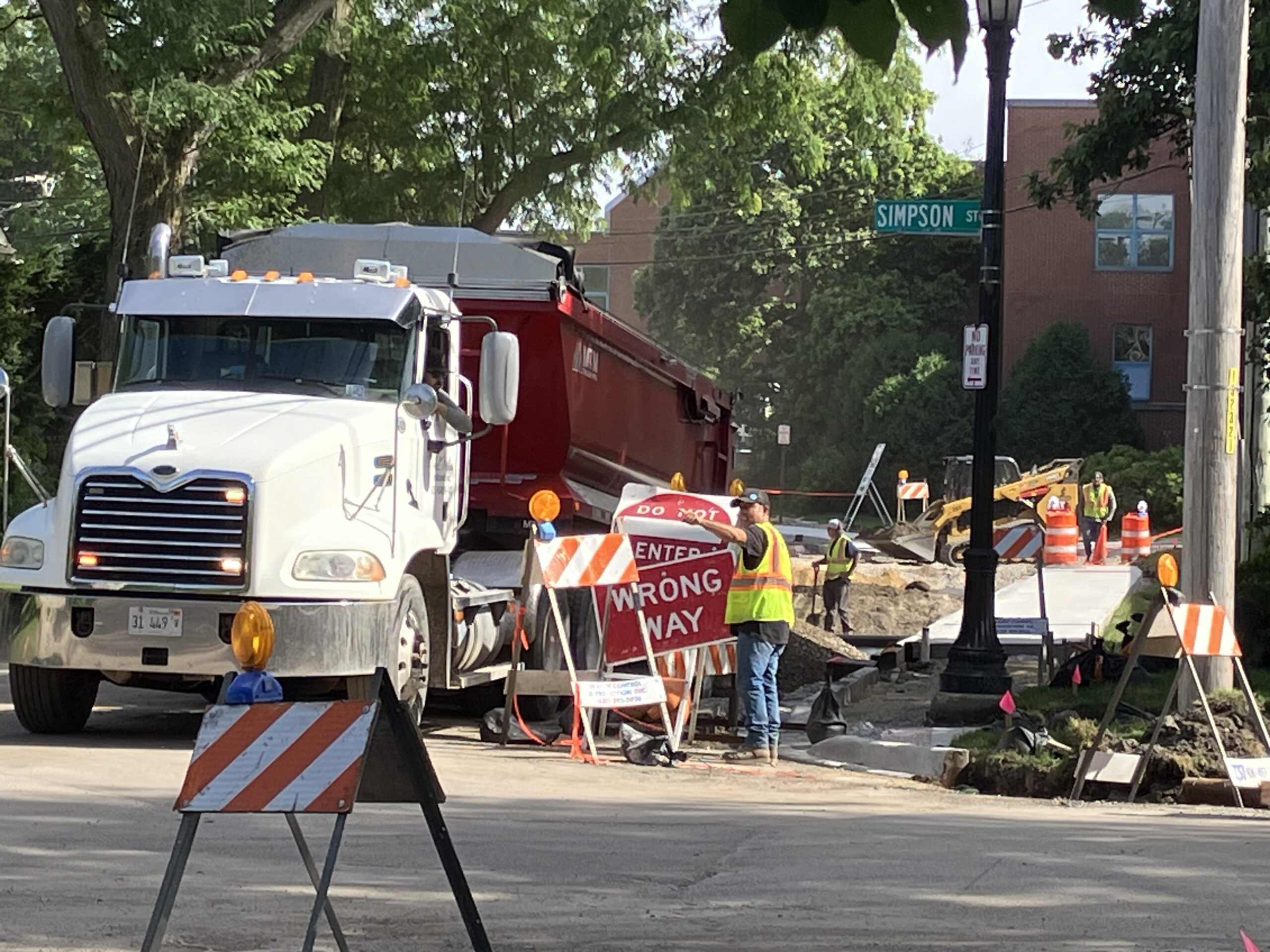By Bob Seidenberg
The economic development climate in Evanston is expected to start warming up next month, when a report on Evanston business districts is due.
At the city’s Economic Development Committee meeting Wednesday, Jan. 25, Paul Zalmezak, Evanston’s economic development manager, briefed members on Evanston’s downtown area as a kind of prelude to the report.
In February, officials expect to receive the results of a $245,000 study of the city’s business districts conducted by Philadelphia-based consultant Interface Studio.
In May, City Council members voted to contract with the group to conduct the study, described as as “a highly-focused community engagement and business district market analysis.”
Working with the results, staff is hoping the study will provide a blueprint to help with immediate economic recovery after Covid, as well as lay the groundwork for future success.
At the Jan 25 EDC meeting, Zalmezak focused on one the districts, and what recent figures say about vacancy rates in both the office and retail sectors.
Office markets have been struggling nationally with many office workers staying home during Covid, and some of its variants.
Evanston vacancy rate stands at a respectable 11% right now, despite the pandemic, said Zalmezak, using figures from CoStar, which keeps real estate analytics.
He told Committee members that “we’ve heard from experts that when the vacancy rate gets down to 10% that sparks the market to build another office,” he said.
He said the idea behind that is when the market shrinks to a low enough rate, “there are companies that want to be here but can’t fit into the small spaces that are vacant. So there is an argument to be made, that investors in office, when it warms up again — not weather wise, but the market — would consider building more office.”
To some degree, he said, the city has seen signs of that movement already with the 10-story mixed use building the developer Trammell Crowe is building at the former Burger King site at 1733-40 Orrington Ave.; and an 18-story multi-tenant office building planned for 605 Davis St.
Surprisingly, downtown Evanston’s retail market space showed an even lower vacancy rate for ground floor, at 10%.
Further, Zalmezak suggested, that 10% rate may be a litle higher than it is, with the Panera Bread space, for instance, closed nearly three years, about to go back on the market.
The space, 1700 Sherman, is located along the “number one intersection in the city for retail,” he said.
Although the store closed in March 2020, the owners didn’t exit their lease. “They’re paying their rent. The lease ends in three months.”
Similarly, with new ownership at the Orrington Hotel that should help fill “the Unicorn space,” said Zalmezak, referring to the space around the Unicorn Cafe cafe, another Covid casualty, which closed also in 2020.
The Unicorn Cafe and businesses around it are located in the face of a parking garage that serves the Orrington Hotel, and now has a new owner on board invested in improving spaces, he said.
Really, Zalmezak argued, the challenge the city faces in its rebuild has less to do with the vacancies and more about the occupants themselves.
“Pick out a category,” he said to committee members. “How money Bubble Tea places do you need?” (The website Yelp actually lists a Top Ten in that category.)
“Remember the burger wars a few years ago,” he said. “We had four burger places. So that where I think we can be strategic later when we talk with Interface…what kind of retail do we want to attract?”
Entering the discussion, EDC member Lisa Dzeikan said that while “I suspect the numbers the numbers might be right about a relatively low retail vacancy rate, “from a pedestrian perspective it sure doesn’t feel that way.”
“We have a lot of properties that are in transition,” she continued, naming the movie theater that while while now open, has portions not built out.
There are properties that are not activated, she said, “and the experience in our downtown is not what it has been. I don’t know how you want to define it,” she said, but “it doesn’t feel like a 10% vacancy rate.”
Zalmezak said he didn’t want “the numbers to intend to suggest that we’re in good shape.”
The two didn’t resolve the conversation.
“When I walk our downtown as a pedestrian, I’m troubled,” said Dziekan.
Replied Zalmezak, “I’m troubled as well.” However, “as somebody in the know I feel like we’re going to be okay in 18 months.”
During the presentation, Zalmezak, a city officials who takes his job intensely, admitted he was momentarily troubled about Westville Old Orchard Mall’s $100 million plan announced last December to transform that development, adding residences and outdoor with a more pedestrian feel to it.
Old Orchard, less than three miles from downtown, has been on Evanston’s mind since it opened in the mid-1950s. (Evanston Roundtable reporter Mary Gavin provides some of the details of that history in “Encountering Evanston History,” published by Evanston RoundTable Media NFP late last year.).
In the city’s instructions to Interface Studio (before the announcement), the mall was cited as a major challenge.
In discussion, EDC and Council member Devon Reid, 8th, said “I do think we have to be really, really concerned about that. I mean, I think Evanston has better bones, we have more density downtown. We have a lot more to offer.”
But he said, recalling visits to Old Orchard as a youngster, the mall represented “a safe place to take the family because you can kind of let your kids run around. You don’t have to worry about a car popping out of somewhere.”
“And I think to revitalize our downtown for the modern area — Mayor (Daniel) Biss put a referral awhile ago and it hasn’t been acted upon — but I really think we need to start thinking getting cars out of our downtown and creating pedestrian-friendly area that folks want to bring the family and feel relaxed and can let the kids run around and not worry about anything else.”
Council member Jonathan Nieuwsma, chairing the meeting, said he liked the idea. He said he really disagreed with a bleak assessment of the threat posed by a renovated Old Orchard.
“We have our public transportation…we’ve got Metra, we’ve got the lakefront…” he said rattling off some of Evanston’s advantages. “I’m not concerned about losing to that (the redevelopment.)
The city does need, though, to “benchmark” that nearby development in officials plan to remake Evanston’s own business districts, he said.
Dziekan suggested that the city look to other North Shore communities that are doing a good job at place making, that are doing a good job clustering restaurants, that are doing things in a way that I don’t think we’re capturing right now.”
“I would look carefully before we close streets to cars,” she added.
She pointed to State Street in downtown Chicago, which was converted into a pedestrian mall in the late 1970s, and then later reopened to pedestrian traffic.
“I think there’s a way of doing a lot of things that we want to see without closing it to cars,” she told the Committee.




